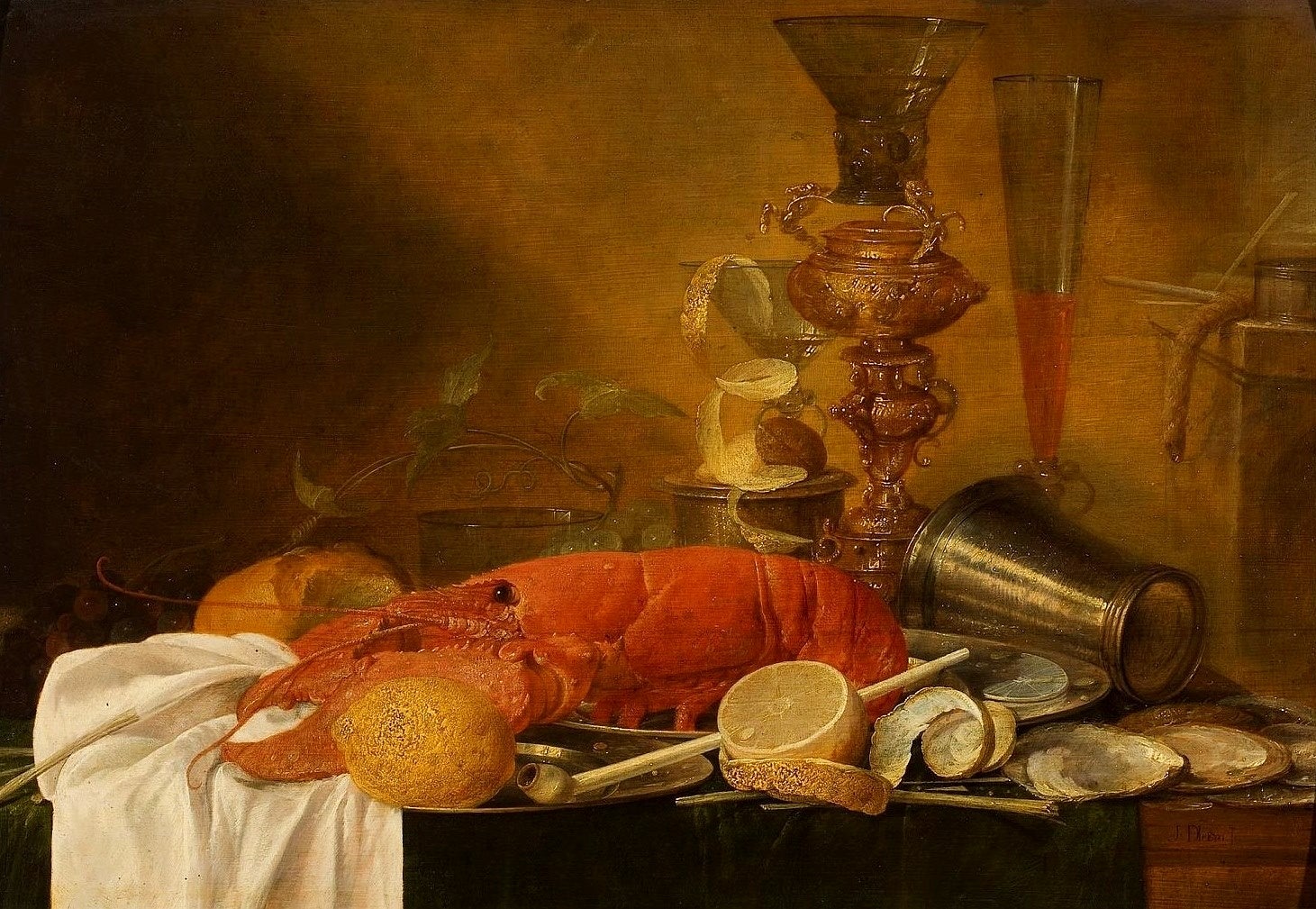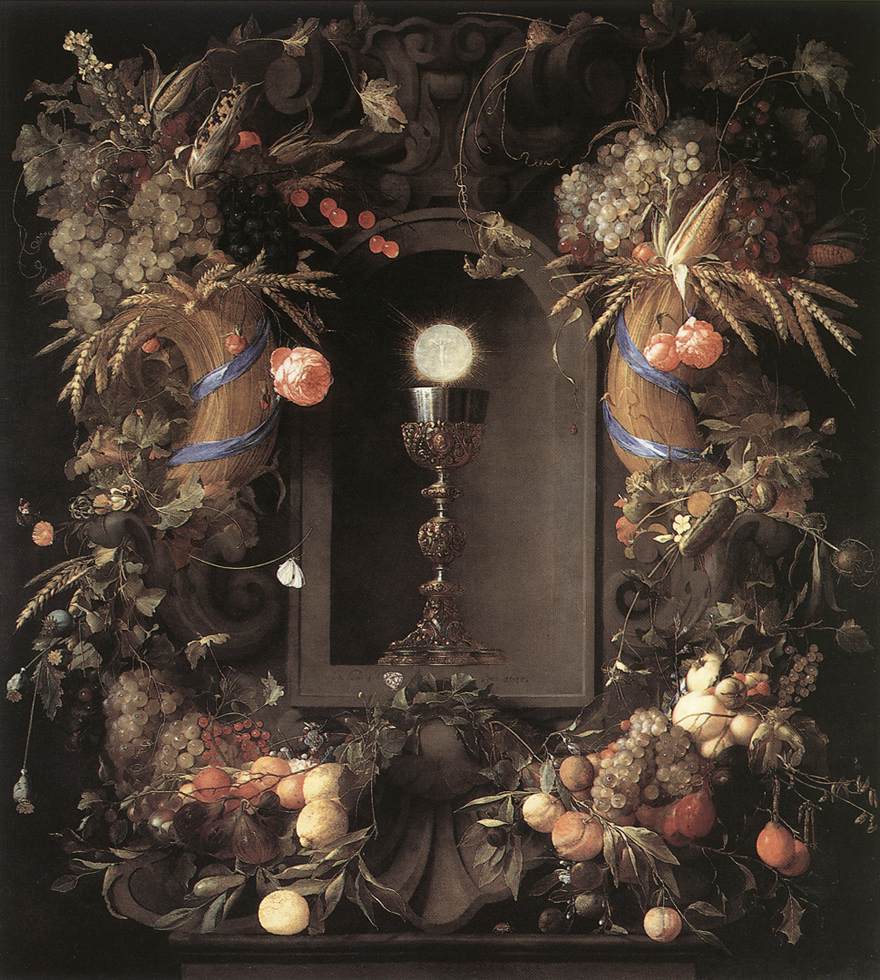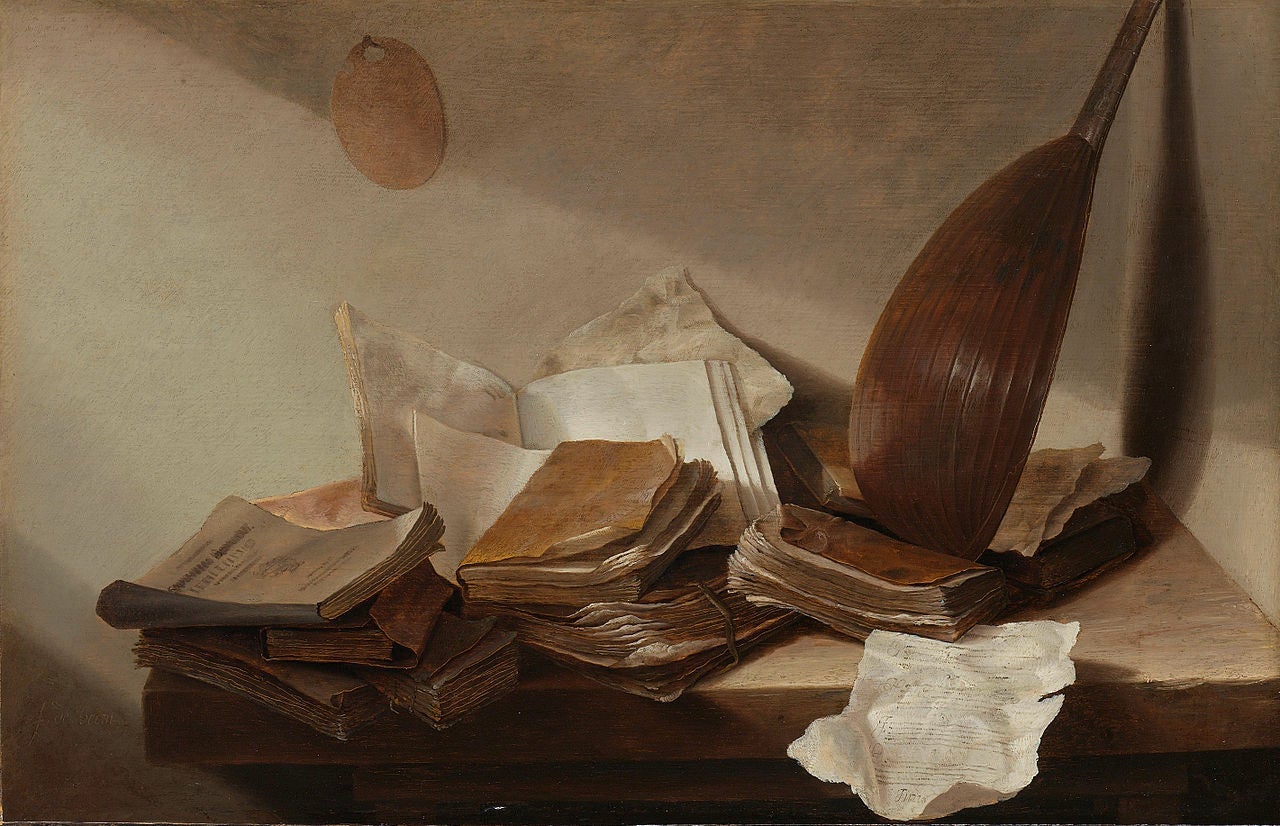Jan Davidszoon de Heem (1606-1684), one of the greatest still-life painters of the Dutch Golden Age, brought particular brilliance to book still-lifes. He became most famous for his extravagant, late-seventeenth century paintings of picture-perfect flowers and sumptuous, fruit-laden tables. But in his twenties he produced some of the most beautiful vanitas still-lifes ever—featuring books.
The Netherlands was fascinated by gardens during the Golden Age, and its painters dominated the still-life genre, mostly with paintings of garden objects. Jan Davidszoon de Heem, whose paintings consistently sold for very large sums of money, began his career depicting fruit and flowers, as was the custom of the day. He was born into a family of still-life painters in Utrecht; his father David de Heem was a master of fruit and flower painting, and eventually his son Cornelius became a painter as well.
For a brief period of time, de Heem took a detour through the less-expected realm of vanitas paintings. These are pensive, often-monochromatic works that contemplate the brevity of life, full of symbolic objects like skulls and rotting plants. The monochromatic style was very popular in the Haarlem and Leiden schools, and by 1628 de Heem was living in Leiden and studying under vanitas master David Bailly. It was here, in the Netherlands’ oldest university city, that he produced his great book still-lifes. Books were not entirely new to Dutch vanitas—Jacques de Gleyn the Younger had painted one in 1621. But Jan Davidszoon de Heem approached them in a light and versatile fashion. He often used only two colors, and played more with light than with color. The text on the pages bemoans the shortness and futility of life—and is more subtle than a skull.
According to the scholarship, this was a time in de Heem’s life when the artist was searching for purpose. This theory is underscored by his rare room interior of the same period (1628),”Interior of a Room with a young Man seated at a Table,” featured above. The book still-life in the right corner widens to include a melancholic young man (probably a self-portrait) confined in a sparsely-appointed room. Turning away from the books, he looks toward the light for inspiration.
This uncommon de Heem gives us a rare chance to experience a painting’s journey. After many years at an Amsterdam art dealer, the painting entered a private collection, (click through to see its earlier presentation and name) before being bequeathed to the Ashmolean Museum at Oxford University in 1939, where it remains.
De Heem’s interest in painting books rather than flowers was short-lived, but his study into light made his later work special, and the relative rarity of these book still-lifes makes them notable. By 1632, Jan Davidszoon de Heem seems to have overcome his dark thoughts and moved to Antwerp. Here, he would achieve great fame thanks to his work with color and plants. Whether or not his book still-life technique influenced his later opulent paintings, the artist’s contemplative work in Leiden with books has returned to the fore.










